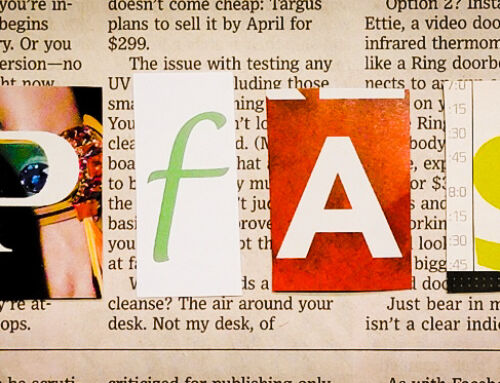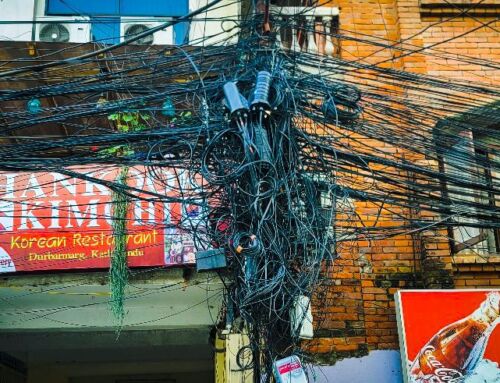View by Topic
Recent Articles
-
New Environmental Laws from the 2024 Maryland Legislative SessionSaturday, April 27th, 2024
-
EPA Designates PFOA and PFOS as Hazardous Substances under Superfund LawSaturday, April 20th, 2024
-
Federal Government Finalizes New Efficiency Standards for LightbulbsSaturday, April 13th, 2024
-
2024 IECC is Final After Addressing Preemption IssuesSaturday, April 6th, 2024
-
Settlement Portends Broad Failure in Attempts to Ban Natural GasSaturday, March 30th, 2024
View by Month/Year
“Green Building Law Update” Headlines
Recent Articles & News from
Stuart Kaplow’s blog
at GreenBuildingLawUpdate.com
- New Environmental Laws in Maryland: 2024 Brings Opportunities for Businesses April 28, 2024
- EPA Takes Action: PFOA and PFOS Now Hazardous Substances Under Superfund Law April 21, 2024
- Shedding Light on the Future: The Evolution of Lightbulbs in the Wake of New Energy Efficiency Standards April 14, 2024
- 2024 International Energy Conservation Code is Final After Addressing Preemption April 7, 2024
Subscribe to the Green Building Law Update!
Stuart Kaplow brings his expertise and extensive experience to the table with his unique digital publication, "Green Building Law Update". Subscribers receive regular updates to keep them informed about important issues surrounding Environmental Law, Green Building & Real Estate Law, as well as the emerging demand for Environmental Social Governance (ESG).
Get fresh content through the lense of Stuart Kaplow's cutting-edge expertise, innovative commentary and insider perspective. Don't miss another issue! Subscribe below.
A Transaction Screen May Be Preferable To A Phase I Environmental Site Assessment
In the coming days Congress is expected to enact, for the first time, statutory authority clarifying what deems a person to have undertaken all appropriate inquiry to satisfy a defense to Superfund (CERCLA) liability. A “Transaction Screen” may well satisfy the appropriate inquiry standard.
Transaction Screen is a term of art for a procedure intended for use on a voluntary basis by individuals who wish to assess the environmental condition of commercial real estate with respect to the range of contaminants within the scope of Superfund liability and petroleum products.
While use of an environmental Transaction Screen is intended to constitute “appropriate inquiry” into an after-acquired property’s previous ownership and uses, for the purpose of satisfying one of the requirements to qualify for the “innocent landowner defense” to Superfund liability by a prospective purchaser, it is not intended that its use be limited to that purpose. The process is intended primarily as an approach to conducting an inquiry designed to identify recognized environmental conditions in connection with a commercial property, and environmental site assessments that are more or less comprehensive than this process may be appropriate in some circumstances.
It is not currently customary practice for residential tenants of multi-family residential buildings, tenants of single-family homes or other residential real estate, or purchasers of dwellings for residential use, to conduct an environmental site assessment in connection with these transactions. Thus, these transactions are not included in the term commercial real estate transactions.
The Transaction Screen process is but one procedure available for environmental site assessment for purposes of appropriate inquiry necessary to qualify for the Superfund law’s innocent landowner defense. It is essentially an alternative to the commonly used Phase I Environmental Site Assessment. Transaction Screens, however, offer certain advantages not the least of which are the ability to complete the inquiry process on a very timely basis and the ability to limit costs of satisfying the requirement.
The Transaction Screen process may be conducted either by the user (or potential future user) of the property. The Phase I Environmental Site Assessment must be conducted by an environmental professional.
With a Transaction Screen, or for that matter with a Phase I Assessment, the process should conclude that either (1) no further inquiry into recognizing environmental conditions that the property is needed for purposes of appropriate inquiry, or (2) further inquiry is needed to assess recognized environmental conditions appropriately for the purposes of appropriate inquiry.
If further inquiry is needed after performance of the Transaction Screen, the user must determine, in exercise of its reasonable business judgment, whether further inquiry, by way of a Phase II Environmental Site Assessment, is needed for those specific issues identified as a concern or whether an environmental professional should proceed to a broader Phase I.
The Transaction Screen consists of asking questions contained within the Transaction Screen questionnaires, observing site conditions of the property with direction provided by the questionnaires, and, to the extent reasonably ascertainable, conducting limited research regarding certain governmental records and standard historical sources. The questions asked of the owners are the same questions as those asked of occupants. The questionnaire in widest use, and the one generally accepted as defining good commercial and customary practice, is the questionnaire published as ASTM E 1528-00. Copies of the questionnaire can be purchased by telephone or online directly from ASTM.
The ASTM questionnaire is followed by a detailed guide designed to assist the person completing the questionnaire. Generally, each question is answered by the owner of the property, occupants, if applicable, and observed during a site visit by the person completing the questionnaire. For example, the first question in the ASTM questionnaire is: “Is the property used for an industrial use?” Each the owner, the occupants, and person completing the questionnaire will respond to that question. The ASTM questionnaire is approximately 5 pages long and asks questions ranging from:“Did you observe evidence or do you have any prior knowledge that any adjoining property has been used as a gasoline station, motor repair facility, commercial printing facility, dry cleaners, photo developing laboratory, junk yard or land fill, or as a waste treatment, storage, disposal, processing or recycling facility?” to “If the property is served by a private well or non-public water system, is there evidence or do you have prior knowledge that the well has been designated as contaminated by any government environmental/health agency?”
Although the first generally accepted Transaction Screen questionnaire was published in 1993, Transaction Screens have only come into wide usage within the last two years. And with the general acceptance of the ASTM’s standard questionnaire, more purchasers of property and lenders with loans to be secured by real property, are relying on Transaction Screens. Lenders are often comfortable with a Transaction Screen because they are already protected from Superfund liability by the Secured Creditor Exemption in CERCLA (provided the lender does not participate in the managment of a facility).
Significantly (and surprisingly to some observers who had anticipated a higher threshold than a Transaction Screen), the Brownfields Revitalization and Environmental Restoration Act of 2001 (amending CERCLA), passed by the U.S. Senate and awaiting action in the House of Representatives, for the first time, deems a person to have undertaken appropriate inquiry to satisfy the defense to Superfund liability, if the person demonstrates that inquiries were undertaken in accordance with the ASTM standard for Transaction Screens. While guidance has in the past been available as to what constitutes appropriate inquiry, this will be the first statutory authority that will resolve the matter.
Accordingly, and should the House follow the lead of the Senate, the number of Transaction Screens will grow significantly in the coming years.









